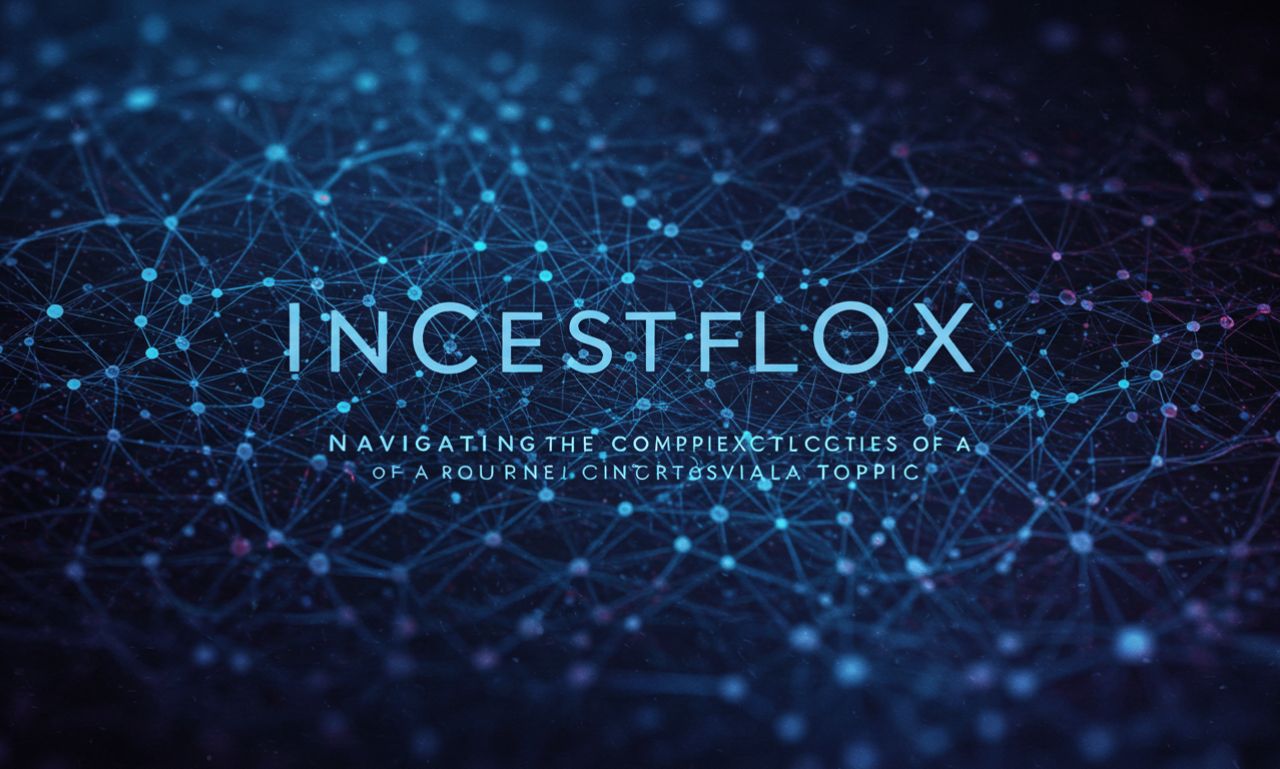Incestflox is a term that stirs both intrigue and outrage. It represents relationships that challenge societal norms, pushing boundaries many deem unacceptable. Yet, beneath the surface of this controversial topic lies a complex web of emotions, legalities, and psychological dynamics. People often find themselves grappling with intense feelings while navigating an intricate landscape filled with stigma and misunderstanding.
As we delve deeper into the subject of incestflox, we aim to shed light on not only what it entails but also how society perceives these relationships. Whether you’re curious about the psychology at play or seeking to understand real-life stories from those involved in such relationships, this exploration promises insights into one of contemporary society’s most contentious issues. Let’s embark on this journey together and unravel the nuances surrounding incestflox.
What is Incestflox?
Incestflox is a term that has emerged in discussions surrounding unconventional relationships. It refers specifically to romantic or sexual connections between close relatives, often exploring themes of love and attraction that society typically considers taboo.
These relationships challenge societal norms and provoke strong reactions. While some may view them as deeply intimate bonds, others see them as problematic due to potential legal issues and social stigma.
The concept raises questions about familial loyalty versus personal freedom. Each case can differ widely based on cultural background and individual circumstances.
Understanding incestflox requires delving into both emotional complexities and ethical dilemmas. This growing topic invites dialogue around human connection, boundaries, and the nature of love itself.
Understanding the Legalities and Taboos of Incestflox
The legal landscape surrounding incestflox is incredibly complex. Laws vary significantly from one region to another, with some places imposing harsh penalties while others may lack clear regulations. This inconsistency can create confusion for those involved in such relationships.
Cultural taboos play a significant role in shaping public perception of incestflox. Many societies view these relationships as socially unacceptable, often labeling them as immoral or deviant behavior. Such stigma can lead to isolation and fear for individuals who find themselves drawn into these connections.
Additionally, familial bonds blur the lines of consent and autonomy within incestflox dynamics. Questions about power imbalances arise, making it essential to consider the ethical implications involved.
Navigating this terrain requires not only an awareness of legalities but also sensitivity toward societal attitudes and personal experiences associated with incestflox relationships.
The Psychology Behind Incestflox Relationships
The psychology behind incestflox relationships is complex and often misunderstood. These connections can stem from deep emotional bonds, childhood experiences, or a shared sense of isolation.
Many individuals involved may seek comfort in familiarity during challenging times. This longing for connection often outweighs societal taboos, leading to these controversial unions.
Power dynamics also play a crucial role. Sometimes one partner holds more influence over the other due to age or life experience. This imbalance can complicate feelings and create layers of conflict within the relationship.
Additionally, there’s an element of rebellion against social norms that some find appealing. Engaging in taboo relationships may provide a sense of thrill or excitement.
Understanding this psychological landscape requires sensitivity and openness to varied human experiences, even when they challenge conventional beliefs about love and family boundaries.
How Society Views and Reacts to Incestflox
Society’s response to incestflox is often a complex tapestry of emotions and beliefs. Many view these relationships through a lens of shock and disapproval. The taboo surrounding familial bonds creates an immediate reaction that can be visceral.
Social media amplifies this discourse, with opinions ranging from outrage to understanding. Some argue for the autonomy of individuals involved, while others firmly stand against it due to perceived moral implications.
Cultural perspectives play a significant role in shaping views on incestflox as well. In some communities, such relationships might be stigmatized more harshly than in others.
This divisive topic inspires heated debates at family gatherings and online forums alike. It’s not merely about personal choice; it’s intertwined with ethics, legality, and cultural norms that vary widely across different societies.
Real-Life Stories of Individuals in Incestflox Relationships
In the realm of incestflox, personal narratives often reveal a complex tapestry of emotions and experiences. One woman recounted her childhood bond with her cousin that morphed into a romantic relationship during their teenage years. For them, it was a connection that felt natural despite societal disapproval.
Another story comes from two siblings who found solace in each other after facing trauma within their family. Their relationship blossomed in secrecy, marked by confusion yet profound affection. They navigated guilt alongside deep love—a contradictory dance.
A man shared how his attraction to his half-sister evolved over time. He struggled with feelings of shame but could not ignore the depth of their emotional intimacy.
These stories highlight individual struggles and joys, underscoring that human connections can defy conventional boundaries while evoking strong reactions from those around them—both acceptance and condemnation exist side by side in this unique space.
Debunking Myths and Misconceptions About Incestflox
Many people harbor misconceptions about incestflox, often fueled by stigma and sensationalism. One common myth is that all incestuous relationships are abusive or coercive. While power dynamics can exist, many individuals in these relationships engage consensually and with mutual respect.
Another misconception involves genetic concerns. It’s widely believed that offspring from such unions will always suffer severe genetic defects. However, the risks vary significantly depending on the specific familial relationship involved.
Some argue that these relationships lack emotional depth. Contrary to this belief, many participants report strong bonds characterized by love and understanding.
Many assume that those involved in incestflox are mentally unwell or deviant. This stereotype fails to consider the unique contexts each situation presents; motivations and circumstances differ greatly among individuals navigating this complex terrain.
Coping Strategies for Those Involved in Incestflox Relationships
Coping with the complexities of incestflox relationships can be overwhelming. It’s essential to find a support system that understands your situation. Seek out trusted friends or online communities where you can share experiences without judgment.
Engaging in therapy can also provide a safe space for exploration and healing. A professional can help navigate emotions, societal pressures, and personal feelings surrounding these relationships.
Setting boundaries is crucial too. Clarifying what is acceptable and what isn’t helps maintain emotional safety. Regularly check in with yourself about your feelings to ensure you’re prioritizing your mental health.
Mindfulness practices like meditation or journaling may assist in processing complex emotions associated with incestflox dynamics. These techniques foster self-reflection and promote inner peace amidst external turmoil.
Educate yourself on the legal implications and psychological aspects involved; knowledge often brings clarity amid confusion.
Conclusion
Navigating the complexities of incestflox is a challenging journey for many. The nuances of these relationships, filled with emotional and societal layers, often lead to confusion and stigma. While society tends to react harshly due to deeply ingrained taboos, understanding the psychological aspects can foster empathy.
Real-life stories reveal that individuals involved in incestflox relationships experience unique struggles and triumphs. They face judgment yet also find connection within their circumstances. It’s essential to debunk myths surrounding such relationships, as misinformation only breeds further stigma.
For those navigating this path, coping strategies are crucial. Support systems—be it therapy or community groups—can offer solace and guidance through emotional turmoil.
The topic remains controversial and multifaceted, inviting ongoing dialogue about acceptance versus moral boundaries in contemporary society. Each story adds depth to our collective understanding of human relations while challenging preconceived notions about love and intimacy.

